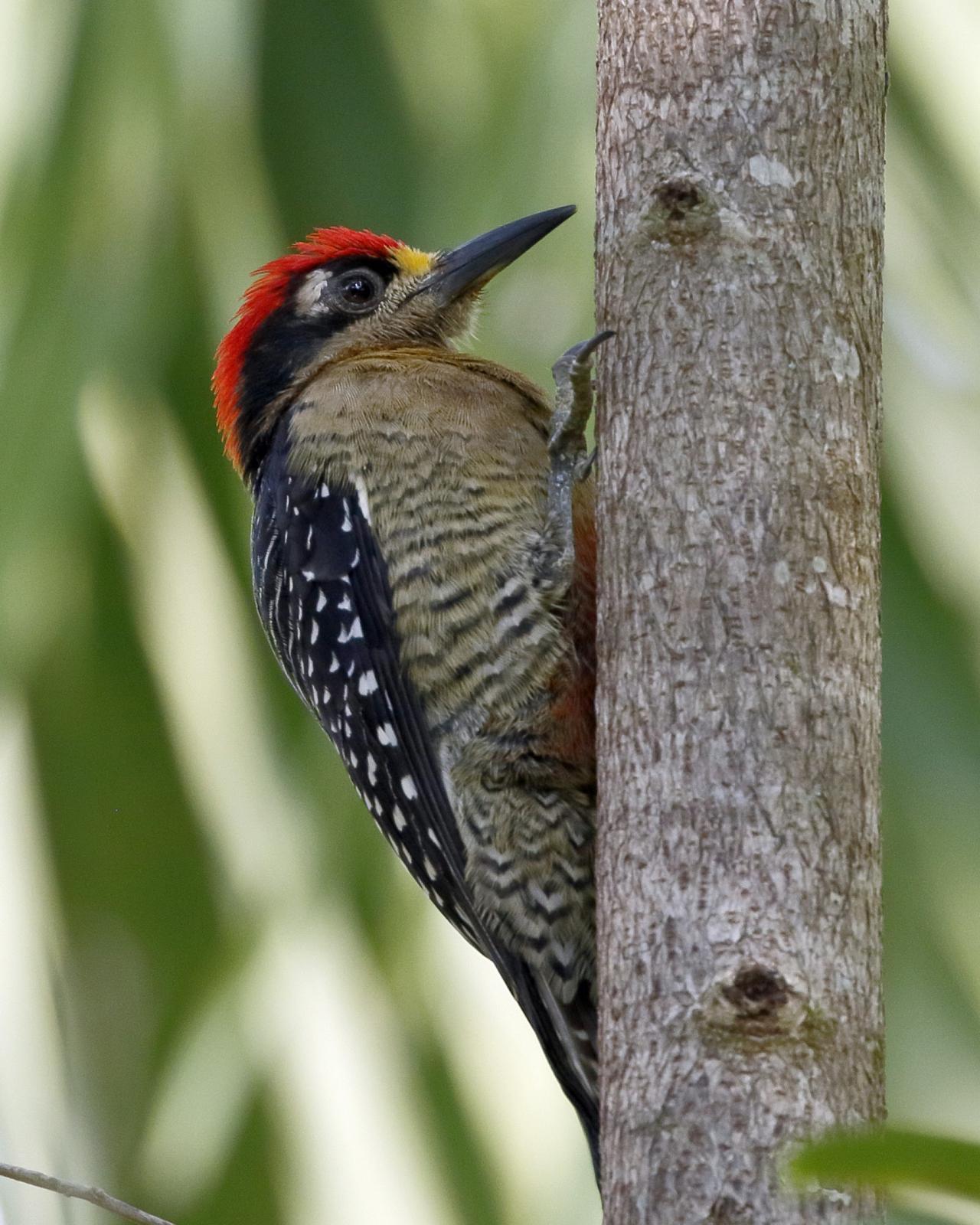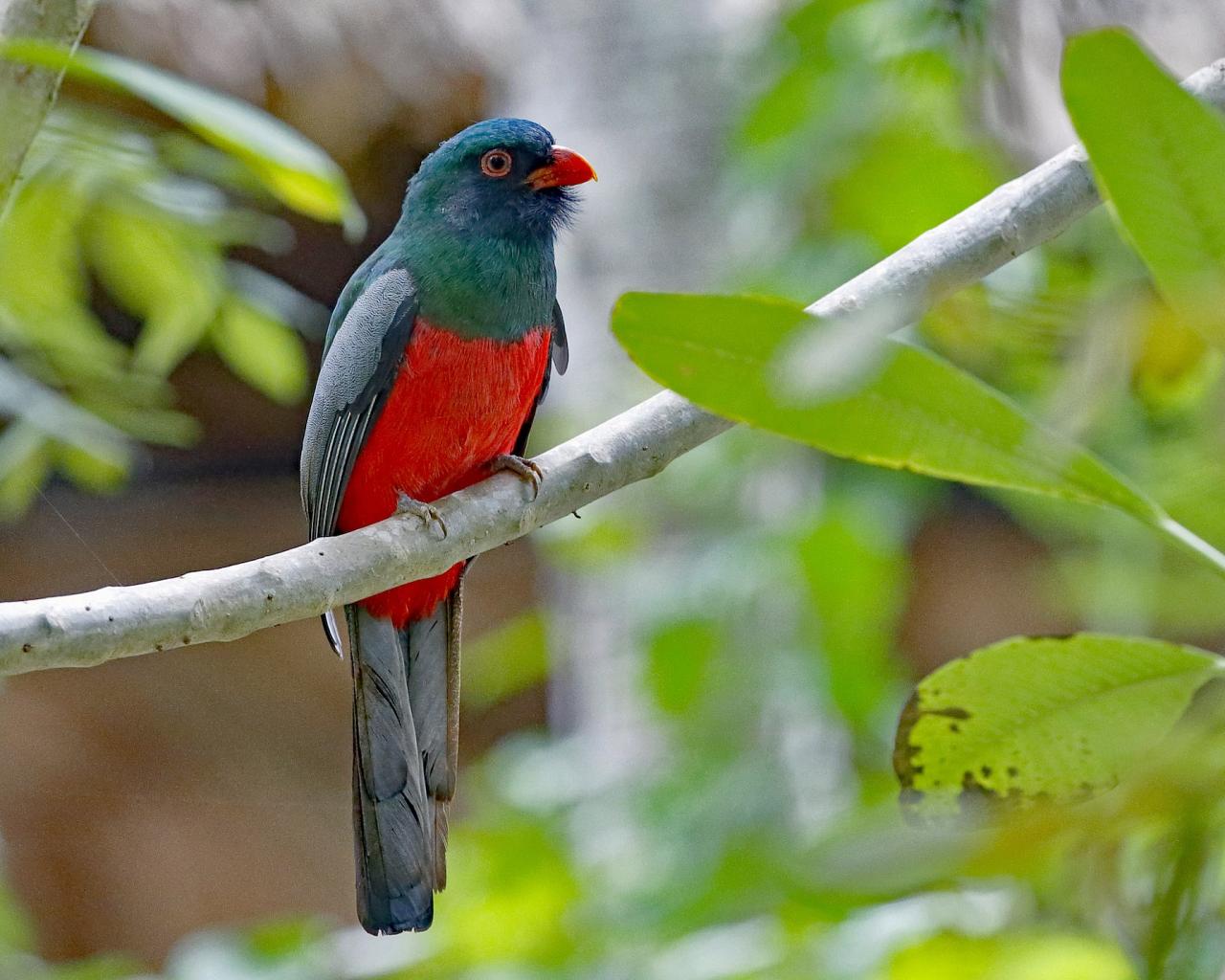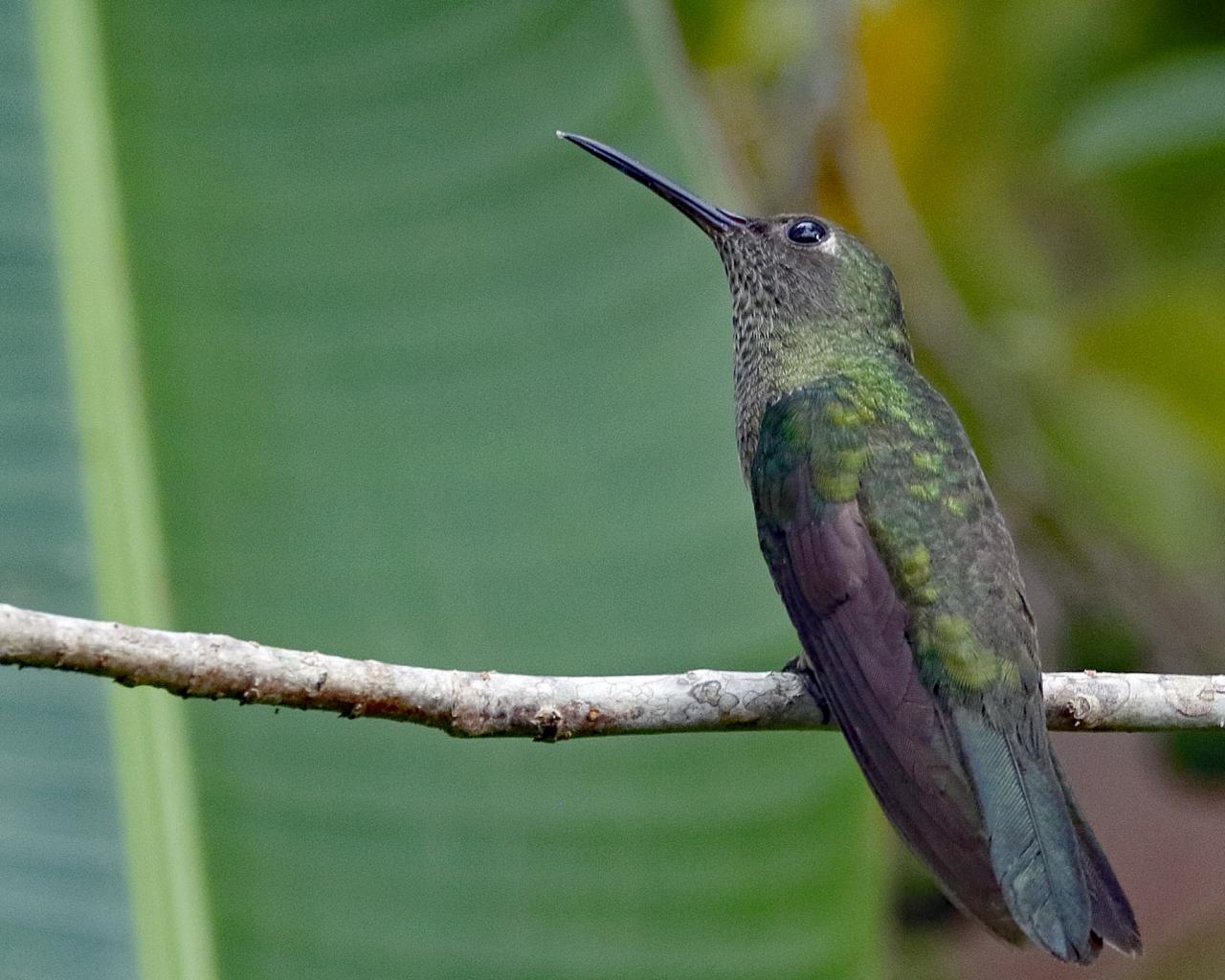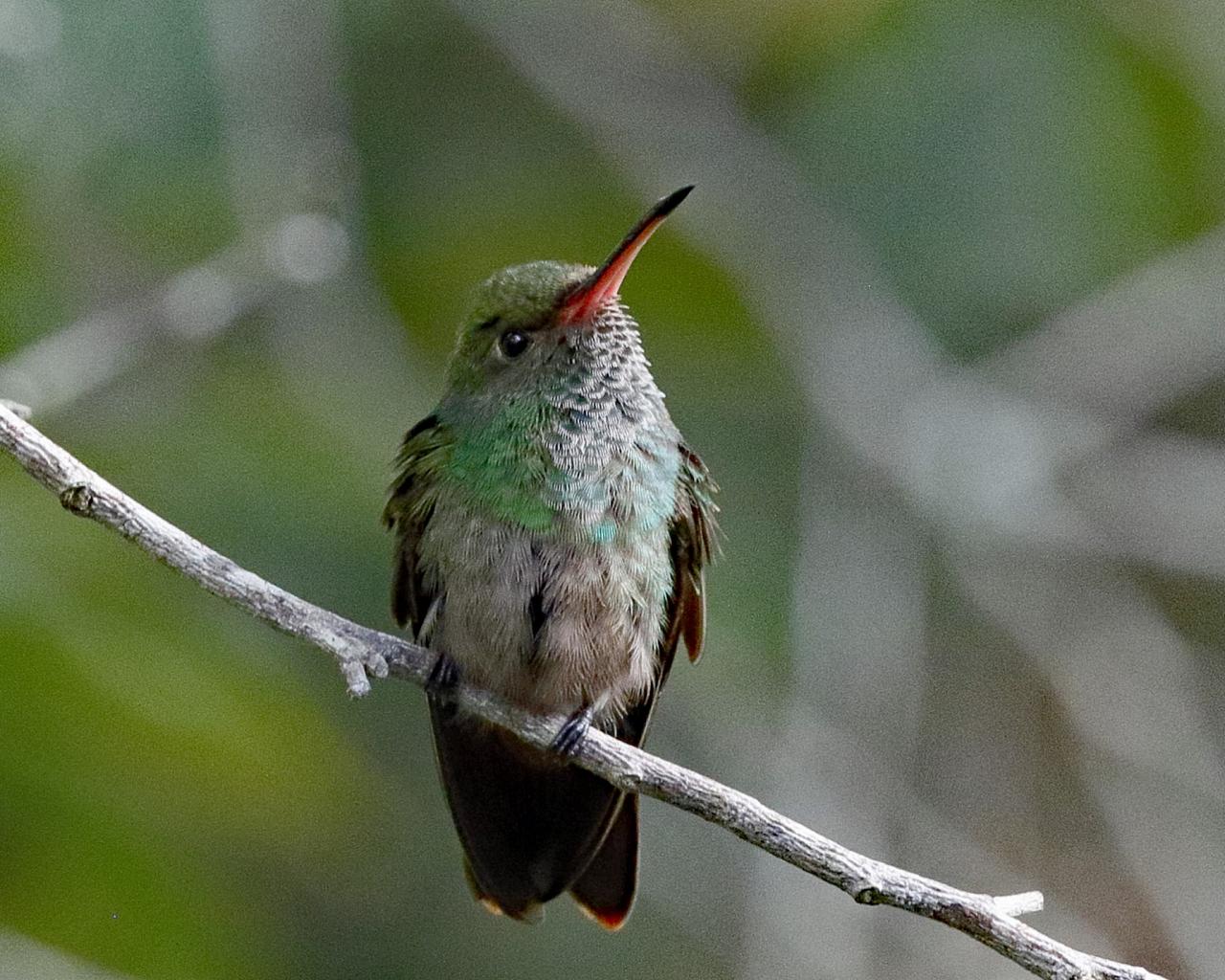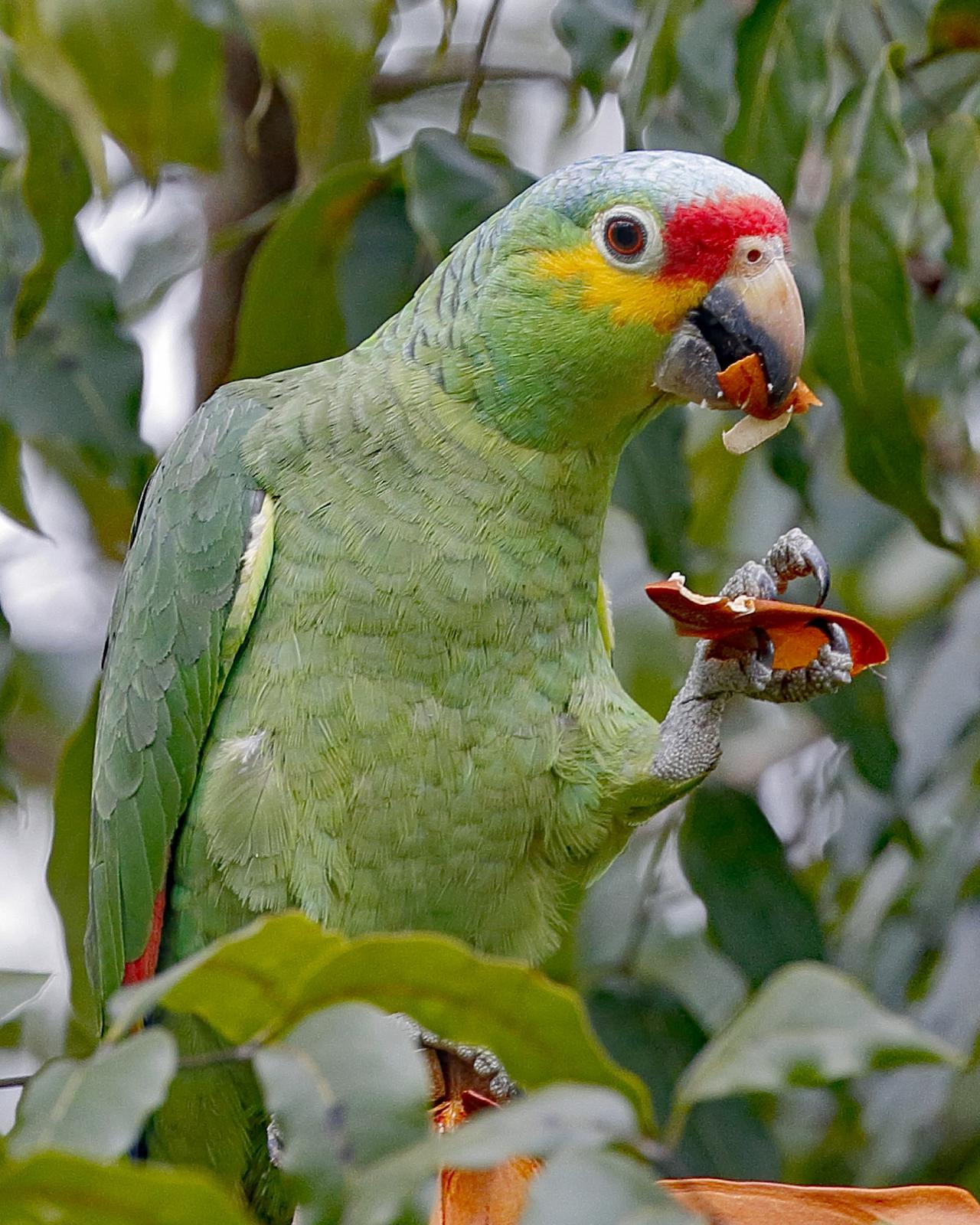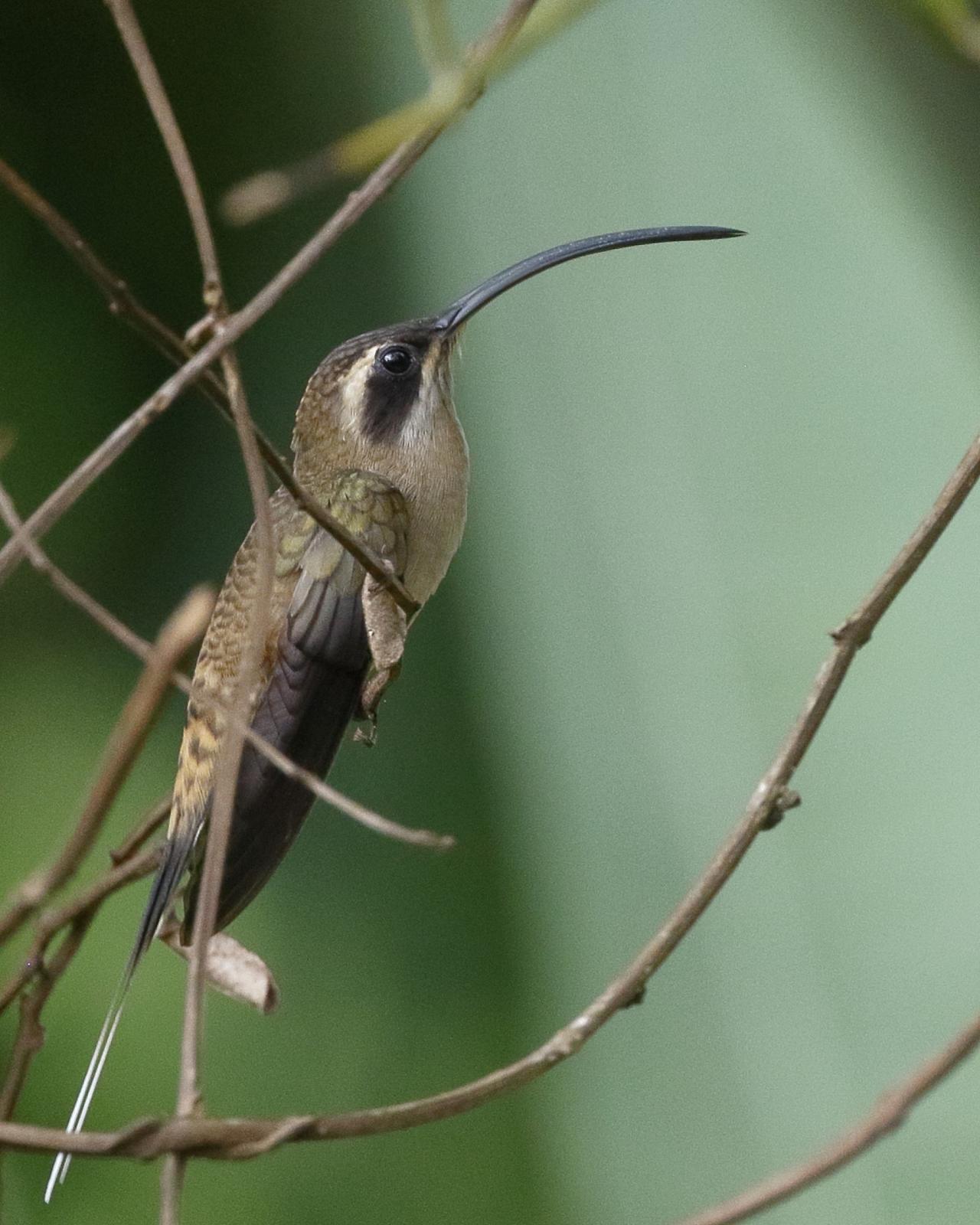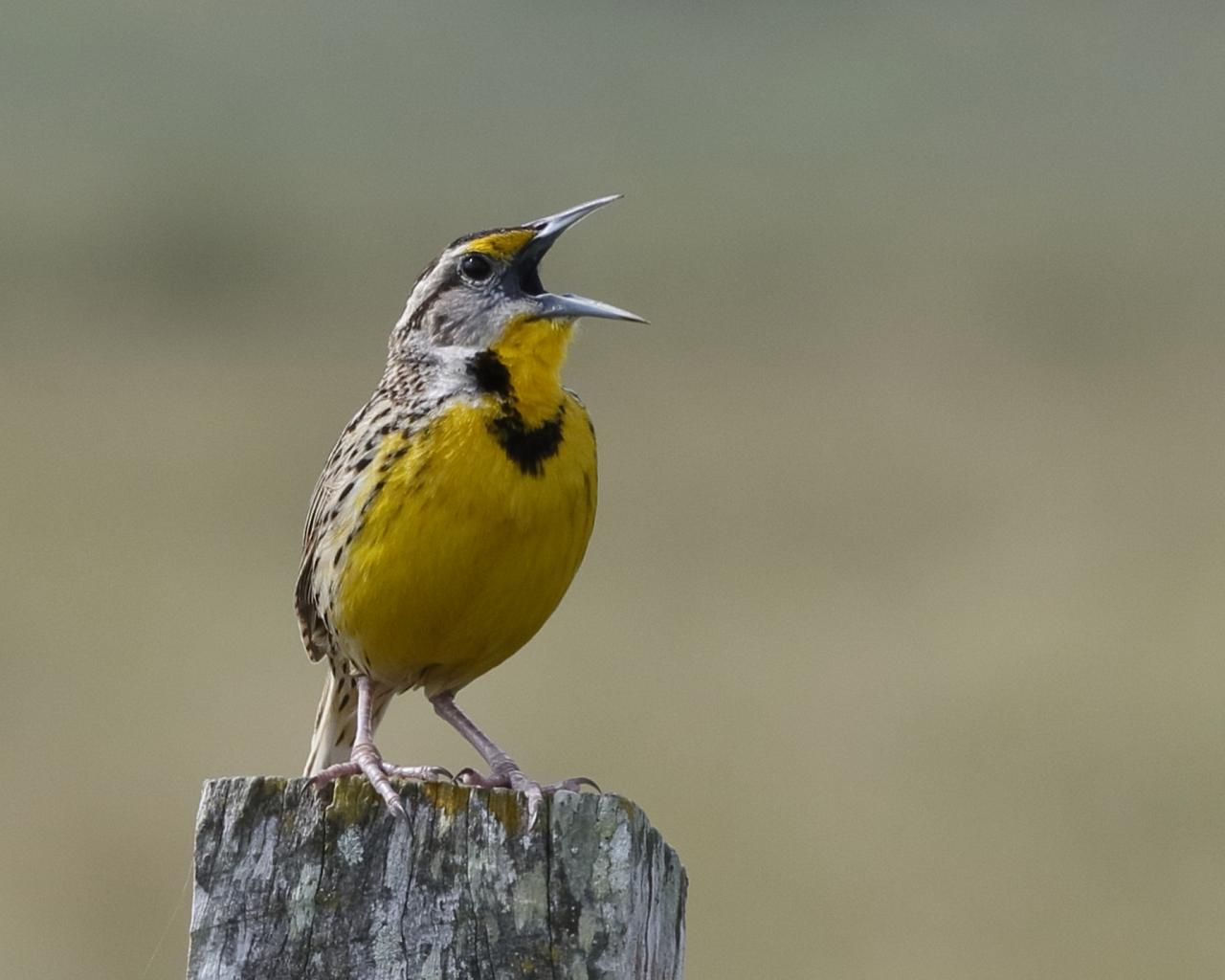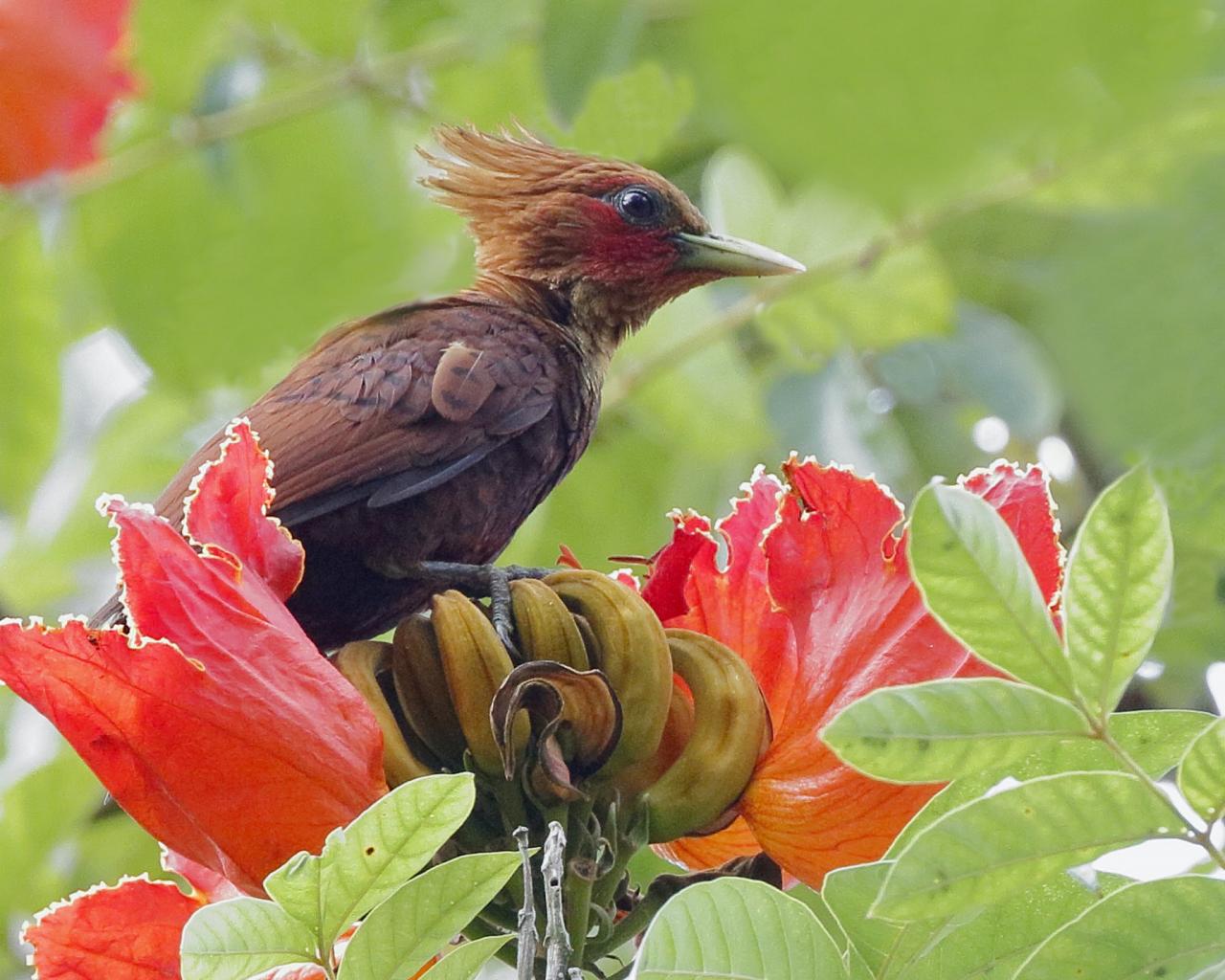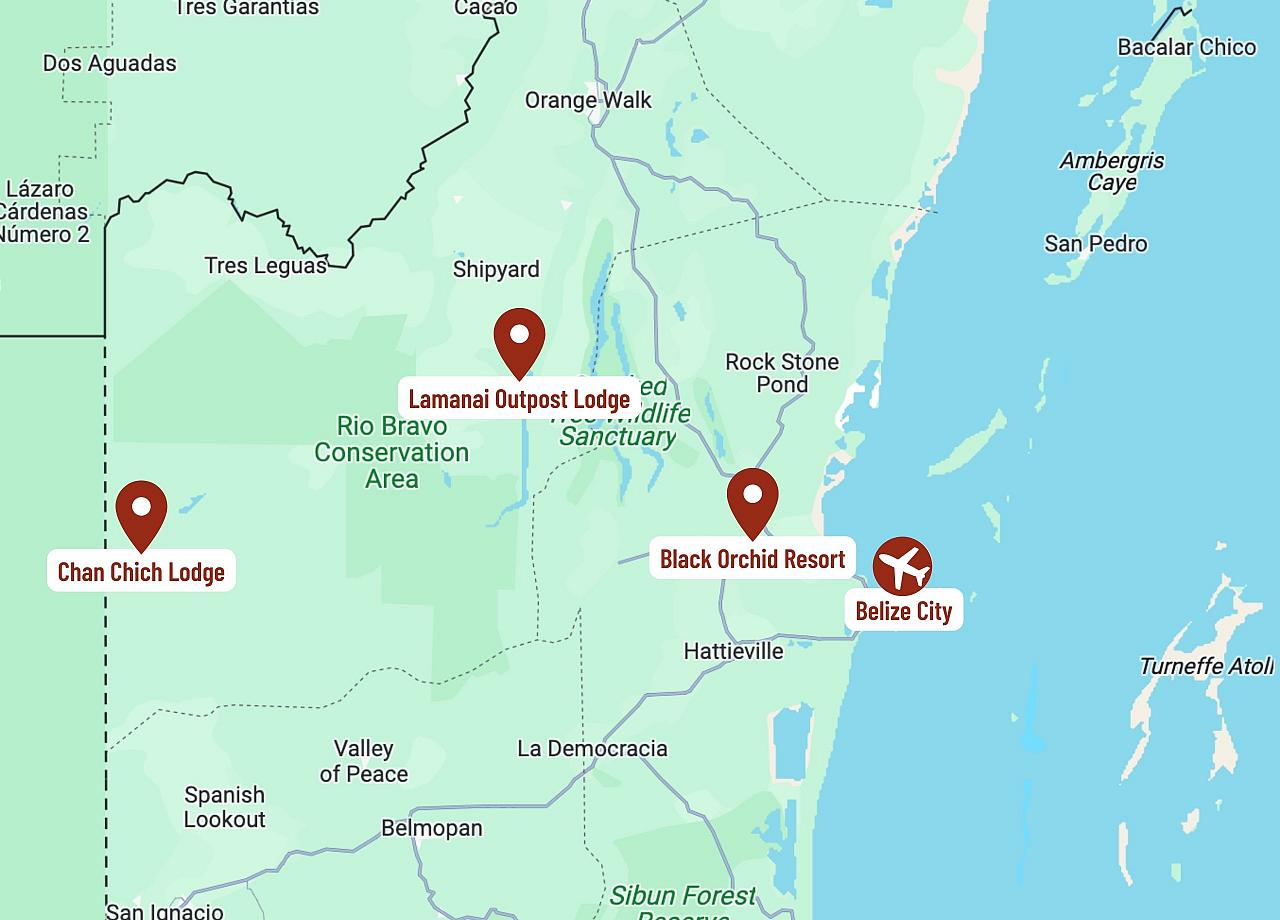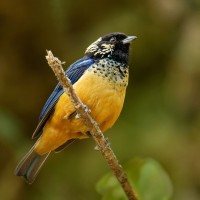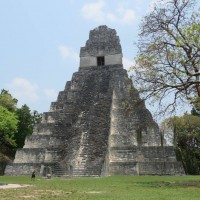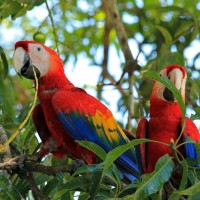Trip Itinerary
Itineraries are guidelines; variations in itinerary may occur to account for weather, road conditions, closures, etc. and to maximize your experience.
Sun., Mar. 2 Arrivals | Bird’s Eye View Lodge
Welcome to Belize! Your local guide meets you upon arrival today and transfers you to the beautiful Bird’s Eye View Lodge.
Our lodge is located on the Crooked Tree Lagoon and boasts a list of over 300 bird species on their property. We can bird the lodge’s grounds today before kicking off the trip with dinner at the resort’s restaurant. Vermilion Flycatcher and quite a few Eastern warblers such as Yellow-throated Warbler can be seen, and the real prize is Agami Heron.
Accommodations at Bird’s Eye View Lodge (D)
Mon., Mar. 3 Crooked Tree Wildlife Sanctuary | Bird’s Eye View Lodge
After an early breakfast and coffee, we enjoy a morning boat trip in the Crooked Tree Wildlife Sanctuary. Barely an hour north of the airport, this refuge is one of the premier birding destinations for aquatic birds in Central America and is designated as a Wetland of International Importance under the Ramsar Convention.
A labyrinth of waterways and small islands, the refuge covers 16,400+ acres of creeks, swamps, and hummocks, including adjoining lowland pine savannas and tropical broadleaf forests. Watch for Morelet’s Crocodile and other reptiles, as well as Yucatan Squirrel and possible Neotropical River Otter.
Inland lagoons support an astonishing array of bird life. Peregrine Falcon, Black-collared Hawk, Great Black Hawk, and Snail Kite are raptor highlights, while across the lagoon, we look for long-toed Northern Jacana and Common Gallinule among the lily pads, with Black-bellied Whistling and Muscovy Ducks nearby. Overhead we may see Caspian and Gull-billed Terns, while the vegetation along the banks supports populations of Anhinga, Tricolored Heron, and Limpkin. Additional heron species may include Little Blue, Green, both night herons (Black- and Yellow-crowned), and possibly Agami. Crooked Tree is also known for its Boat-billed Heron rookeries, which can be noisy, with birds vocalizing and bill-clacking. We also watch for Amazon, Green, Belted, Ringed, and even American Pygmy Kingfishers (the latter as small as a sparrow) perched above the water.
One of the key species we look for on the water is the Sungrebe. We also carefully watch for Jabiru storks, the tallest flying bird in Central and South America. Yucatan endemics include Red-vented (or Yucatan) Woodpecker, Yucatan Flycatcher, Yellow-lored Parrot, the raucous Yucatan Jay, and possibly even Black Catbird.
Nearby Crooked Tree Village, established around 1750, is possibly the earliest inland European settlement in Belize. Surrounded by Crooked Tree Lagoon, it is known for its locally grown and processed cashews.
We enjoy an evening sunset tour by boat that includes rum punch.
Accommodations at Bird’s Eye View Lodge (B,L,D)
Tues., Mar. 4 Bird’s Eye View Lodge | Lamanai Outpost Lodge
We enjoy a morning bird walk on the lodge trails to look for Yucatan endemics. After lunch we depart on another boat trip, this time to transport us to Lamanai Outpost Lodge, our home for the next three nights. The transfer in to Lamanai is FUN. From the boat, we should see Mangrove Swallow, Limpkin, Northern Jacana, Swallow-tailed and Snail Kites, and, with luck, a Black-collared Hawk or a huge Jabiru. Be ready with a windbreaker, camera, and binoculars. We arrive in time for late-afternoon birding by the lodge, followed by dinner.
Accommodations at Lamanai Outpost Lodge (B,L,D)
Wed., Mar. 5 Lamanai Outpost Lodge
Whether you’re well-traveled in Central America or visiting for the first time, there is much to hold your attention at Lamanai. Birds and monkeys busy themselves around the cabins; nearly 200 species of butterflies flit through the area, colorful dragonflies and damselflies buzz by, lizards ranging in size from tiny geckoes to five-foot-long iguanas lounge around, and of course, numerous herbs, shrubs, and trees attract wild tropical wonder.
We’re mindful of some of the regional endemics, including Black Catbird, Rose-throated Tanager, Yucatan Jay, and Gray-throated Chat. One of the most interesting phenomena, and one we are likely to encounter at Lamanai and Chan Chich, is an army ant march. Birds of many families attend these marches, eating the insects, frogs, lizards, and other organisms flushed by the foraging ants. Standing quietly at the margin of an ant swarm, we get close looks at faithful ant followers, including Gray-headed Tanager, Red-throated Ant-Tanager, and a number of woodcreepers, including Tawny-winged and Northern Barred. Other possibilities are White-whiskered Puffbird, several flycatchers, migrant warblers, and perhaps a Great Tinamou. Even birds of prey like the dainty Barred Forest-Falcon follow ant swarms?all so absorbed in the sea of insect life that they ignore our fascinated observation.
Accommodations at Lamanai Outpost Lodge (B,L,D)
Thurs., Mar. 6 Lamanai Outpost Lodge
Overlooking the edge of the large New River Lagoon, Lamanai offers a different mix of birds from Chan Chich, our third lodge. Some birds at the water’s edge are familiar: Neotropic Cormorant, Yellow-crowned Night-Heron, and Purple Gallinule. Others, like White-collared Seedeater, Mangrove Vireo, Ruddy Crake, or the delightful American Pygmy Kingfisher remind you that you have left the United States. Open-air dining lets you be immersed in nature; local foods and tropical fruits abound!
During our stay we take several boat trips. Canoe excursions offer relaxing and intimate wildlife views, and can be arranged for both day and night paddles. Such trips frequently produce an endangered Morelet's Crocodile, iguanas, and basilisk lizards, up to five species of kingfishers, Boat-billed Heron, Gray-necked Wood-Rail, and occasionally a rarity like an Agami Heron. At night, with the aid of spotlights, we look for several species of bats, Yucatan Nightjar, Yucatan Poorwill, and Northern Potoo.
We also make sure to have time to see the impressive Lamanai Maya Ruins, and to explore the open savanna habitat, which affords us a good mix of species including Yucatan Woodpecker, Yellow-lored Parrot, the Petén race of Botteri’s Sparrow, and occasionally Aplomado Falcon.
Accommodations at Lamanai Lodge (B,L,D)
Fri., Mar. 7 Lamanai Outpost Lodge to Chan Chich Lodge
We enjoy a last morning of birding and breakfast at Lamanai Outpost Lodge before departing by van shuttle to Chan Chich Lodge. This is largely a travel day, on back roads through Mennonite farming country; we do stop for some birding along the way as the opportunity presents itself, and take a break at a small country store. We bring snacks, and plan on a late lunch upon arrival at the lodge.
Chan Chich (Maya for “little bird”) is one of the premier birding lodges in the world, located near the very remote coffee and livestock producing community of Gallon Jug. En route, we watch for Crested Caracara and other birds of prey, Scissor-tailed and Fork-tailed Flycatchers, and flooded fields that attract waterfowl, large wading birds, and migrating shorebirds.
Chan Chich Rainforest Lodge, set in a Maya Plaza dating from the Classic Maya Period of 250 – 800 AD, is located within the 250,000 acre Rio Bravo Wilderness Conservation Area in northwestern Belize. The comfortable lodge and its twelve cabañas are made of local materials and are attractively furnished. From your porch you are likely to see Ocellated Turkey parading through the plaza, hear howler monkeys calling above, and see a Crested Guan crashing through the trees.
The extensive trail network could reveal Great Tinamou, Red-capped Manakin, Royal Flycatcher, and Lovely Cotinga, along with a host of trogons, parrots, and toucans. Finding their tracks, the possibility of sighting secretive wild cats adds to the excitement. You can visit Maya burial chambers with painted friezes still intact, canoe on Laguna Verde, or swim in a nearby stream where you might be joined by a playful River Otter. Chan Chich also has a swimming pool and spa in this exquisite forest setting.
The rich forest here is home to over 350 species of birds, including Ocellated Turkey, Great Curassow, Crested Guan, Ornate Hawk-Eagle, Maya Antthrush, Rufous-tailed Jacamar, Royal Flycatcher, and the impossibly cute and often elusive Tody Motmot. It is always a pleasure to be here!
Mammals like Yucatan Black Howler Monkey, Central American Spider Monkey, Central American Agouti, and Gray Fox are commonly seen, and five felines, including Ocelot and Jaguar, have been found here, too. Beautiful hummingbirds like the Purple-crowned Fairy and Long-billed and Stripe-throated Hermits feed in clearings around the cabins, and both Red-capped and White-collared Manakins take berries at fruiting shrubs near the dining room.
As the morning air warms, birds of prey like Bat Falcon, White Hawk, Black Hawk-Eagle, and Plumbeous Kite soar over the cabañas. By January, the bird population is even richer as local nesting birds are joined by numerous migrants: warblers, vireos, orioles, and flycatchers that spend the winter in these rich forests.
Once settled, we begin our exploration with a short afternoon hike to the Upper Plaza and the King’s Tomb Trail. Mounds that have formed over unexcavated ruins provide nest sites for Lesson's Motmot, which are frequently seen around the lodge clearing. Montezuma Oropendola, which nest in colonies around the lodge, are fun to watch as they tumble and gurgle in courtship display.
Accommodations at Chan Chich Lodge (B,L,D)
Sat., Mar. 8 Chan Chich Lodge & Nature Reserve
The nighttime serenade of Common Pauraque quickly blends into a dawn chorus of tinamous, motmots, and perhaps a Strong-billed Woodcreeper, ushering in our early morning walk. With luck we find an assortment of dazzling tropical tanagers, woodpeckers, euphonias, and honeycreepers.
After a delicious breakfast, we venture into the forest, past manakin leks and the territories of dueting Spot-breasted Wren. One trail takes us to a lower open and moist tintal forest where specialties include Rose-throated Tanager, Gray-throated Chat, and Yucatan Flycatcher. On a recent visit to the tintal, a Pheasant Cuckoo sang endlessly. Here we have a greater chance of encountering shy birds like Ruddy Quail-Dove, Great Curassow, and Scaly-throated Leaftosser that are unlikely to venture into the lodge clearing.
We break for lunch and perhaps a brief siesta or a swim, then head out in the late afternoon as the forest cools and life stirs. Today we likely explore the River Trail, which skirts wetter habitats. On past tours we’ve surprised a Tapir enjoying its bath, found both Green and Pygmy Kingfishers and watched delicate hummingbirds come in to drink and bathe.
By 5:30 PM, the afternoon is turning to dusk and we enjoy camaraderie and armchair birding at the lodge’s traditional happy hour and dinner. Mealy Parrot and Olive-throated Parakeet are noisy and are seen as they come to their evening roosts.
Accommodations at Chan Chich Lodge (B,L,D)
Sun., Mar. 9 Chan Chich Lodge & Nature Reserve
This morning we walk along the lush Sylvester Village road, which passes through a variety of forest types, good for birds and butterflies (when sunny). This is always a productive walk for elusive species.
In the afternoon we stroll out on the main road leading from the lodge to the suspension bridge over Chan Chich Creek. Here, huge Blue Morpho butterflies flit by, Cinnamon Becard whistle at the roadside, and fruiting trees attract Black-crowned Tityra, Black-cheeked Woodpecker, Golden-hooded Tanager, and maybe a wintering Yellow-throated Vireo. Some spotting scope work at the bridge could produce several species of dragonflies and damselflies, including one of the red-eyed dancers or the colorful Caribbean Yellowface.
We return to the lodge for a relaxing final evening and a delicious dinner, with time to recount our trip highlights.
Accommodations at Chan Chich Lodge (B,L,D)
Mon., Mar. 10 Chan Chich Rain Forest Lodge | Departures
A final morning walk allows us to search for Black Catbird and other Yucatan bioregion specialties. Then, we leave Chan Chich and return to Belize City for flights home. (B)
Essential Information +
This information is important for being prepared for your journey; we want you to have Read more
This information is important for being prepared for your journey; we want you to have the best experience possible. If you only read one section, this one is key!
Ahead of your tour:
- Make sure your passport is in good condition and will be valid from the date of arrival through to date of departure. We highly suggest validity for at least three months BEYOND the date of your scheduled return to the U.S. as a precaution for delayed departure. See "Passports, Visas & Documentation" section below for details.
- No Visas are required for U.S. citizens for stays of this tour's duration in Belize. If you are from another country, please contact the Embassy of Belize’s website for guidelines.
- Please check current CDC recommendations for travel to Belize and consult with your doctor about general travel vaccinations you should have as precaution for travel. See the “General Health and Inoculations” section below.
- Travel insurance in case of serious medical emergency is strongly recommended. Full health coverage and repatriation is available through Allianz Travel Insurance.
- Plan your international flight reservations to arrive into and depart from Philip Goldson International Airport (BZE). Send a copy of your itinerary to the Naturalist Journeys office please.
- Soft sided luggage/duffel bags are easiest for packing the vans. Pack essential medications in your carry- on luggage, as well as one day of clothing and optics in case of luggage delay.
Arrival into Belize City (BZE)
Please note. If you are delayed in travel, please FIRST call the number of our Belize operator. As a backup, contact our office (these numbers are on your emergency contact list).
We will coordinate your pick-ups close to your departure, and once we have all travelers completed travel information. Please make sure we have both your ARRIVAL and DEPARTURE information, so they can plan this. It is imperative that we have your correct TRAVEL information; we appreciate if you email us a copy of your flight reservation. They will check internet for your updated flight information.
Please plan to arrive into Philip Goldson International Airport (BZE) in Belize City no later than 2:00 pm. Upon arrival and entering the terminal building, you will come to Immigration and then Baggage Claim and then the Customs Area.
- For Immigration, get into one of the lines for Visitors and have a copy of your hotel emergency contact list so when they ask where you are going, you have the data handy. Take a photo of this on your phone if easier for you ahead of the tour and know where you are going. After your passport has been stamped for entry, you will enter the luggage claim area.
- For baggage, have your claim stubs handy, many countries want to see these as you exit.
- For Customs, you will notice that there are two routes to exit through customs with your claimed luggage. For most of you, the exit marked “Green Line” will be your way out of the terminal. However, if you have anything to declare at customs, you must follow the “Red Line”. The “Green Line” bypasses the customs procedure to save you time. It is not always open; in which case you go through the normal “Red Line”.
Please check the Travel Details tab of this tour for additional information and updates.
Departures from Belize City (BZE)
After breakfast, we have a morning flight back to Belize City so plan your flight for after 1:00 pm. We will provide transfers or arrange for taxis to the airport for all departures as needed for the departure day. The departure fee is now typically built into your airline fare.
Please check the Travel Details tab of this tour for additional information and updates.
Passports, Visas & Documents
Guidelines and regulations can change. It is always advisable to double-check the country’s documentation requirements 60-90 days ahead of traveling. Information for U.S. citizens can be found at https://travel.state.gov/content/travel/en/international-travel/International-Travel-Country-Information-Pages.html. If you are from another country, please contact the tour destination’s embassy website for guidelines.
Passport: At the time of writing, U.S. citizens must have a passport that is in good condition and at minimum is valid at the date of entry through your scheduled return to the U.S. However, we highly suggest at least 3 months validity beyond the end of the tour to allow for unexpected delays in return travel. Please check that expiration date! You should have at least one blank page per entry stamp. The blank pages need to say “Visas” at the top. Pages marked “Amendments and Endorsements” will not be accepted.
Visa: At the time of writing, a tourist visa is not required for stays in Belize of this tour's duration, but you
will need proof of a return ticket. The necessary documents will be distributed by your airline while in flight or provided for you upon arrival. We advise that you bring your eContact list of hotels for use at immigration as well.
As a precaution for lost or misplaced documents you carry on your person during travel, we highly recommend you keep hard and digital backup copies on your phone (either photo or PDF scan), as well as a hard copy left with your emergency contact at home. The recommended important documents to copy include, but are not limited to; your passport ID page, travel visa, the front and back of your credit card(s), the airline barcode on your luggage. This will greatly expedite getting new ones if necessary – we hope everyone will always keep travel documents close so that losing them will not be an issue.
General Health & Inoculations Information - Be Prepared!
Health requirements for entry to any country can change. It is always advisable to double-check the country’s health requirements and recommendations 60-90 days ahead of traveling. A helpful website for planning is the Centers for Disease Control and Prevention (CDC) website for Belize or by phone (800) CDC-INFO or (800) 232-4636.
We will share your health information with your guide. This information will be kept confidential but is very important as we want to be best prepared in case of medical emergency.
Anti-malarial drugs are not required for any area that you will visit. There are occasional reports of Dengue Fever in lower elevation areas, for which there is no vaccine. Dengue fever, Zika, and other diseases are contacted by mosquito bites so be sure to use mosquito repellant containing DEET or Picaridin. At the time of writing, the risk of malaria is perceived to be low in Belize. The best precaution is to dress with long sleeves and spray up. More information can be found at redplanet.travel/mdtravelhealth/destinations/belize.
Vaccinations: The CDC recommends that all travelers be up to date with routine and basic travel vaccinations (such as Hepatitis A and Typhoid) before traveling to any destination. Please check with your doctor for recommendations at least 4- 6 weeks before departing on your trip.
Prescriptions: It is a good idea to pack any meds you take regularly in your carry-on luggage. Bring an extra pair of glasses or contact lenses. Bring an adequate supply of any prescription medications you use, a copy of the prescription and a list of generic names of your medicines as “back-up” in case it is necessary to purchase drugs while abroad. You’ll want to keep medications in their original, labeled containers.
Allergies: To be prepared for environmental triggers to allergies or breathing difficulties, please bring your allergy and/or asthma medication(s). If you have severe allergies talk to your doctor about carrying an EPI pen and notify your guides. It is also recommended to carry with you an up-to-date record of known allergies, chronic medical problems and Medic Alerts so that, if necessary, emergency treatment can be carried out without endangering your health.
Common Ailments: We recommend that you bring a travel-sized first aid kit and a supply of standard over-the-counter medications for prevention or treatment of common ailments (such as diarrhea, constipation, stomach upset, cough, congestion, head or body aches, motion sickness, insect bites and sunburn); as well as ointments, moisturizer, sunscreen, oral rehydration salts, band-aids, moleskin for blisters, cotton swabs, nail clippers, and tweezers, etc.
Altitude illness: If high altitude will be encountered on your trip, it can affect some and, if there is a concern, be prepared. The most general symptoms are headache and occasionally fatigue and dizziness. You’ll want to take it easy, particularly at first. The likelihood of these symptoms can be reduced by resting, drinking plenty of water, avoiding alcohol and taking aspirin. If you have worries about the altitude, ask your physician about medications (such as Diamox) that may be right for you. For more information, see https://wwwnc.cdc.gov/travel/yellowbook/2024/environmental-hazards-risks/high-elevation-travel-and-altitude-illness.
Weather & Climate
The climate in Belize is tropical, and in general, the weather during your stay should be humid with warm to hot temperatures (75-90°F) in the lowlands, but can cool off into the high 50°Fs to mid-60°Fs in the early morning and evenings. The hot and rainy season ranges from June-October, while November-February have slightly cooler temperatures (though still warm and tropical!) with tapering rainfall. February-May begin with the dry season, that eases into the hotter and wetter summer months.
Annoyances & Hazards
Mosquitoes can occur in the forests; therefore, a supply of insect repellent containing DEET is essential. At grassland or farm locations you will encounter chiggers, if so, spray your shoes with repellent, and tuck your pants into your socks, this helps a lot. When back, be sure to shower and air out your clothing. Chiggers are a part of lowland and mid-elevation habitats throughout Central and South America. Your guide should have a good read on if it has been wet enough that they are active. There can also be poisonous snakes and insects, though encountering them is rare. Do listen carefully to any advice given by your local guide. And remember the sun is strong and be prepared with proper protection.
Food & Drinks
Menus at lodges and restaurants are varied, sustainably based on the wonderful local ingredients available, and delightfully prepared in a sanitary environment. As with any case when traveling we urge you to consider what your body is used to before you eat something. Trust your common sense when consuming food and beverages. This is the best way to avoid any unwanted problems. Ask for recommendations from your hotel or refer to a guidebook such as Frommers. Meals reflect the contributions of American, European, Spanish, and local cuisines.
The CDC considers tap water in Belize not safe to drink. Bottled water will be available for field trips and drinking water is provided for you to refill a bottle. One of the many ways we strive to do our part for the environment is by trying to reduce our consumption of plastics; if convenient we appreciate if you can bring reusable water bottles.
Packing, Clothing & Laundry
Dress is very informal and laundry services are available for a fee at our lodges. While some people will change for dinner, it is usually just to a drier or cleaner version of what they wore during the day. Again, the climate is warm to hot, so you will be comfortable in lightweight clothing. Be sure to remember your rain gear, as the rain, at times, may be quite intense - a light rain jacket or poncho is good and YES do bring an umbrella. Boat tours when there is cloud cover can be cool. Your raincoat can double as a layer to combine with a light jacket possibly some evenings.
Please, pack light. We are serious about this – we move around a lot; you just do not need much to cope with tropical life! Please do not bring anything more than you must. Lay out your hopeful things to take and then do a serious paring down please! Hair dryers are available at most Lodges.
TRAVEL TIP: Imagine NOT getting your suitcase. Wear your most important shoes for the field and have one day’s clothing change (including a change of underwear!). And please do not pack any essential medications, or your vital optics, in your checked luggage!
Spending Money
The official currency in Belize is the Belizean Dollar. We advise you carry a mix of different types of payments, such as cash, an ATM card, and a credit card. For the current exchange rate, please refer to an online converter tool like www.xe.com or your bank. U.S. dollars in good condition (no rips or tears) are taken as a form of payment but shopping for smaller handicrafts may necessitate using local currency. If you have U.S. dollars, then there is no need to exchange currency before your trip since it is accepted at almost any business. If you would like local currency, you won’t need to exchange much money since you can use U.S. dollars at most places. You will be able to change money after your arrival at banks or hotels, though ATM machines are available in Belize City at the airport. Out of the airport they are infrequently available.
When using the ATM to withdrawal cash, keep in mind it might only accept cards from local banks or not allow cash advances on credit cards. Many U.S. banks charge a fee of $1 - $5 each time you use a foreign ATM. Others may charge you a percentage of the amount you withdraw. Check with your bank before departure. You must become familiar with how to use your ATM card and PIN number ahead of the journey.
Major credit cards are accepted in Belize. We suggest you have more than one card available, if possible. You may want to bring more than one brand of card (VISA and Mastercard are commonly accepted; American Express is less common). You can use credit cards at lodges to pay your bar and gift tabs. Not every shop will accept every card. Some smaller shops and restaurants, or taxis require cash, so it is always a good idea to ask before making a purchase. Also, we recommend that you advise your bank or credit card company that you will be traveling abroad to avoid questions, card freezes, or charges. If you have a choice of cards, bring one with no foreign exchange fees.
Traveler’s checks are not widely accepted. They can be difficult to exchange. We do not advise you use them.
Gratuities
Tipping is optional and completely at your discretion. If you would like to show our appreciation to your guides, lodge and hotel staff or anyone associated with this tour, it is entirely appropriate. Know that they appreciate anything you care to give and of course you can do more if you wish! Lodges normally have a box for tips that the staff share, and hotels you would just tip the maids as you do at home. We hope that you will be pleased with all professional services.
Here is a standard suggestion for tipping on birding trips:
- Birding tour guide: US $10.00 - $15.00 per day per guest
Note: If there is more than one guide, this can be split among them, so that is a total, per person, per day
- Tour driver if different from guide: US $5.00 - $7.00 per person/day
- Lodge staff: US $6.00 - $10.00 per day per guest
- Transfer (airport shuttle) driver: US $2.00 - $3.00 per person
- Hotel & international airport bellmen: US $1.00 per suitcase
You may wish to bring small gifts for local people that you meet and enjoy (this is totally optional!). T-shirts, school supplies like pens and small notebooks, inexpensive watches and baseball caps are always popular. Your guides can pass along school supplies to a local school if you bring them. They also love any nature books/coloring books.
Cell Phones & Internet Service
Your guide is well connected and can help if any urgent communication need arises. However, it is highly recommended that you travel with a cell phone, if only as a precaution for the unfortunate occurrence of a medical emergency during an outing and needing swift accessibility to critical personal or medical contacts.
Please check with your wireless provider to see if your phone and service will work in your destination country. Options include activating international roaming, purchasing a local SIM card at the airport (newer phones may not accept SIM cards), or simply turning off cellular service and relying on Wi-Fi to make calls and access the internet. If your phone can connect to Wi-Fi, you may be able to make voice and video calls free of charge. Another option if you have access to Wi-Fi is to use smartphone apps like Skype, WhatsApp, or Viber to send text messages, and make voice calls, or video calls. Many smartphones, tablets, or laptops come with one of these apps pre-installed or you can download for free.
Your hotels and most local restaurants provide Wi-Fi at least in their common areas. Although it is generally a reliable service, it can be affected by adverse weather conditions due to the remote location.
Make sure if you do NOT want to use your cell phone that you turn off your cellular data. You could incur huge charges if you are not on Wi-Fi. Putting your phone in airplane mode if you mainly use it for photos will save the battery as well.
Please refrain from taking or making cell phone calls in the vehicles when traveling with other passengers, unless it appears to be an emergency. This disrupts other guests, plan on cell phone call use on your own time.
Electricity
The standard in Belize is the same as in the United States and Canada: 110 volts AC (60 cycles). Plugs are set up in the same style. However, three-pronged outlets can be scarce and existing three-prong outlets may feature even-sized flat blade plugs, so it's helpful to bring along adapters for both two- and three-prong outlets. More information can be found at www.power-plugs-sockets.com.
Time
Belize does not observe daylight savings time and is on the same time as our Central Zone in the U.S. A great website if you want to tell someone to check ahead of calling you is www.timeanddate.com.
Questions?
Please contact Naturalist Journeys by email at clientservices@naturalistjourneys or telephone at our office: (520) 558-1146 or toll free: (866) 900-1146 if you have any questions. Many thanks for traveling with us and we hope you enjoy your journey!
Pace & Protocols +
Pace of the Tour & What to Expect
You will receive a Schedule-at-a-Glance and list of Read more
Pace of the Tour & What to Expect
You will receive a Schedule-at-a-Glance and list of hotels (our eContact List) a few weeks before your departure. This will serve as an outline for each day and alert you to any recent changes made in the schedule or to our hotels, if needed.
Our journeys are set up to follow the rhythm of nature. Our focus is on birding and nature; we offer full, well-planned field days and often get up early for that magical time around dawn. We generally follow the published itinerary, but we stay flexible to the weather, wildlife opportunities and the interests of the group. Your guide will keep you apprised of the next day’s schedule at each evening meal, noting what to bring and what to prepare for. Questions and/or concerns are welcome.
The pace of our Naturalist Journeys tours is moderate; to fully participate you should be able to get in and out of vehicles several times a day, and walk 1-3 miles over uneven terrain. It is important to participate with a flexible attitude as adjustments may be made in our schedule to make the most of our time in the field or for other purposes at your guide's discretion. We are not a “listing” bird company that drills down on target species, but at times we do wait for those special species unique to the places we visit. During the day, we take time to stop for photos and for educational opportunities to learn about conservation projects, landscapes, and geology. We appreciate other taxa as well as birds, with mammals often the biggest draw but plants and butterflies are also very popular. Our clients often lend their own expertise to the mix.
We like to make meals a fun and memorable part of the experience, too. Breakfasts are often at hotels, and we carry snacks, fruit, and water in the vans each day. Lunches are a mix of picnics in the field (weather dependent) and a chance to dine with locals at small cafes and restaurants. For dinner, we pride ourselves in our homework to keep up with the best choices for dining, choosing restaurants with atmosphere that specialize in local foods. On occasion we keep dinner simple to go back out in the field for sunset wildlife viewing or night walks. In some remote locations, our choices are limited. If you are tired, room service for dinner may be an option you can choose.
Naturalist Journeys International Trips: Guide Role
Naturalist Journeys supports ecotourism and the development of excellent local guides. Once we know our international partners and guides well, we can send out small groups working directly with these trusted partners, adding a Naturalist Journeys guide to assist the local expert when we have a group of 6-7 or more. This helps us keep your costs down while retaining tour quality. The local guide is your main guide. You can expect your Naturalist Journeys guide to be well-researched and often they are experienced in the destination, but their role is not to be primary, it is to help to organize logistics, help you find birds, mammals, and interesting other species in the field, keep reports, help facilitate group interactions, and to keep the trip within Naturalist Journeys' style. Local guides live in the countries we travel to, know the destinations intimately, and are often the strongest force for conservation in their countries. They open many doors for us to have a rich experience.
Smoking
Smoking is not permitted in any vehicle or in any situation where the group is participating in an activity together, such as a vehicle excursion or a guided walk. Please respect all designated smoking areas at hotels and restaurants.
Transportation
As a courtesy to each other, we ask that all travelers please rotate seating. On international trips we may all be in one small bus, on some trips we are in vans, particularly the roomy Sprinter Vans when available. Some areas require us to be in smaller 4-wheel drive or safari vehicles. Rotation allows you to sit with different drivers and alternate front and back seating.
Photo Release & Sharing
We take many group photos and will share photos with the group. And after your tour, we will organize a chance to share photos via Dropbox or Google Photos. Please note that this is our policy and if you prefer to be excluded, we need to know ahead of your tour.
By registering for this tour, you agree to grant to Naturalist Journeys and its authorized representatives’ permission to record on photography film and/or video, pictures of my participation in the tour. You further agree that any or all of the material photographed may be used, in any form, as part of any future publications, brochure, or other printed materials used to promote Naturalist Journeys, and further that such use shall be without payment of fees, royalties, special credit or other compensation.
Travel Insurance
You are traveling in remote areas. Naturalist Journeys strongly recommends you have full medical and evacuation insurance from a company such as Allianz, for all international travel. If you do not have medical coverage or evacuation coverage on your existing travel insurance policy or for some reason elected not to take that out, we advise getting an evacuation plan with Global Rescue, World Nomads, Medjet, Allianz (they can do evacuation only) or a similar company. These plans are typically $300-$400 for a year for multiple destinations. This coverage may be a part of a larger Travel Insurance policy but can also be purchased on its own.
Questions?
Please contact Naturalist Journeys by email at clientservices@naturalistjourneys.com or telephone our office: (520) 558-1146 or toll free: (866) 900-1146 if you have any questions. Many thanks for traveling with us and we hope you enjoy your journey.
Packing List +
Please Pack Lightly!
Soft luggage is much easier for us to pack than a more rigid Read more
Please Pack Lightly!
Soft luggage is much easier for us to pack than a more rigid hard sided piece, so if you have the choice, please use your soft luggage. Be sure your name and address are printed on the inside of the bag as well as on the luggage tag. Be sure to pack your personal medication, airline tickets, identification, binoculars, camera, and other essential items in your carry-on bag. Your carry-on bag must be able to fit under the seat, or it will be taken away by airline staff and put with the regular luggage. You will want a daypack for field trips, so this is the ideal carry-on. We recommend that you check with your airline a week or so before your departure regarding luggage weight and size restrictions.
In general, the weather during your stay should be warm to hot (75-90°F) in the lowlands, but at least 20° cooler in the early morning and evening. Check your favorite weather website closer to your departure to better predict what the weather will be on your adventure.
Dress is comfortable and informal throughout the trip. Dressing in layers is the best way to be comfortable. Lightweight long sleeve shirts and long pants make ideal field clothing as they are more protective from sun and vegetation. But if you like to wear shorts, by all means bring some. Also, choose clothing you don’t mind getting dirty or muddy and things that are easy to launder. Loose clothing discourages insects and is very cool. A light jacket should be enough in the cooler evenings and on boat rides. Water shoes are great when on the boats.
Note on clothing colors and insect repellent: We recommend muted colors of tan, brown, khaki, grey or green, as they are spotted less easily than white or bright colors; though camouflage clothing is not recommended and in some countries, not legal to wear. It is possible to purchase field clothing permeated with insect repellent such as the Craghoppers Insect Shield Clothing collection. Another approach is to purchase Permethrin spray (online or from REI) to treat your field clothing and socks before your departure.
Clothing & Gear
- Lightweight long pants, 2 pair
- Lightweight long sleeve shirts – 2 or 3
- Shorts (optional)
- T-shirts or equivalent (1 per every other day recommended – remember you may buy some there!)
- Personal underclothing
- Socks – lightweight and easy to wash and dry
- Comfortable walking/hiking shoes such as tennis shoes
- Lightweight hiking boots. Please note that forest trails will be on uneven terrain and may be muddy – good tread and support are essential!
- Sandals for evenings, travel days, and for wearing on boats (optional, TEVA style are great)
- Lightweight raincoat or poncho
- Lightweight jacket, fleece fabric is ideal
- Comfortable clothes for evening (a cleaner version of your field clothes or a skirt, sundress, etc.)
- Bathing suit
- Hat with broad brim
- Bandana (optional, great for cooling off when you are hot and sweaty. They even make them with a gel inside for several hours of cooling)
- Field vest (optional), a great source is Big Pockets
Equipment & Miscellaneous
- Airline tickets or e-ticket verification
- Passport, visa (if required), travel insurance info, money & credit cards.
- A secure pouch to carry the items above on your person (such as a secure, under-clothing document pouch)
- As a backup: copies of all the above (phone and/or paper) packed in a separate location than on your person, plus a set given to your emergency contact at home as a backup. For passport, copy of the ID and entry stamp pages.
- Small daypack or fanny pack for carrying your field gear
- Cell phone and charger
- Binoculars
- Spotting scope and tripod (optional)
- Camera and charger/extra batteries, memory cards/film, lens cleaning supplies and your instruction manual (optional)
- Umbrella – compact and not brightly colored
- Walking stick – we find that many travelers appreciate a walking stick on trails, sporting goods stores carry collapsible models that pack easily in your suitcase (optional)
- Small flashlight with fresh batteries. Please note that if you like to read at night, lighting in other countries is often poor in the rooms, and you may want to bring a booklight, headlamp, or flashlight for this purpose.
- Alarm clock
- Sunscreen/lip balm with SPF
- Sunglasses with neck strap
- Insect repellent (something containing DEET, and sulphur powder or other for chiggers (try a garden store)
- Toiletry articles
- Water bottle (or plan to refill one bought on location)
- Notebook or journal and pen (optional)
- Field guides (optional)
- Sink plug (often not available, a flat universal one is easiest to use)
- Washcloth (again, available some places and not at others)
- Laundry soap if you plan to do hand washing
- Earplugs – in urban and even rural areas barking dogs and traffic noise can be annoying
Rechargeable power bank (optional)
- Snorkeling gear if at a beach lodge (available on sight as a rental, additional cost. If a regular snorkeler, you will want to bring your own mask and snorkel, perhaps rent fins)
- Steri-Pen or other UV water treatment device to help cut down on the use of plastic bottles (optional)
WE DO NOT RECOMMEND TRAVELING WITH PRECIOUS OR VALUABLE JEWELRY – don’t tempt anyone and don’t bring things you’d regret losing - your mind will be at ease!
Medical & First Aid
- Motion sickness preventatives if likely to be needed on bus, van, drives, etc.
- Personal medication (and copy of vital prescriptions)
- Personal first aid kit and medications for general ailments (Imodium or Lomotil, antihistamine cream or tablets, eye drops, etc.)
- Copy of eyeglass prescription, copy of medical prescriptions, and any medical alert
- Heath insurance and vaccination information (kept in personal pouch with other travel documents)
- Extra pair of eyeglasses or contacts
- Band-aids, moleskin to protect against blisters
- Antibacterial hand soap or hand sanitizer, small vial
Suggested Reading List +
These books are, of course, optional, but recommended to help you get the most out Read more
These books are, of course, optional, but recommended to help you get the most out of your trip.
Top Picks
Birds of Belize
Merlin App – Belize Pack. A phone-based birding app from Cornell University Laboratory of Ornithology. Before departing the U.S., download the app for free, then from within the app, download the “pack” for Belize
Lonely Planet Belize 8
General Reading
A Natural History of Belize: Inside the Maya Forest
Maya Nature, an Introduction to the Ecosystems, Plants and Animals of the Mayan World
Field Guides
Birds of Belize
A Guide to the Birds of Mexico and Northern Central America
Birds of Mexico and Central America
Birds of Central America: Belize, Guatemala, Honduras, El Salvador, Nicaragua, Costa Rica and Panama
A Field Guide to the Mammals of Central America and Southeast Mexico
A Swift Guide to the Butterflies of Mexico and Central America
A Field Guide to the Amphibians and Reptiles of the Maya World: The Lowlands of Mexico, Northern
Wildlife & Nature
Belize: Reefs, Rainforests and Mayan Ruins
Belize and Northern Guatemala
Birds of Tropical America: A Watcher's Introduction to Behavior, Breeding, and Diversity
The New Neotropical Companion
A Naturalist’s Guide to the Tropics
Nature of the Rainforest: Costa Rica and Beyond
The High Frontier: Exploring the Tropical Rainforest Canopy
Life Above the Jungle Floor
History & Culture
Frommer’s Belize
Moon Handbooks, Belize
Understanding Belize, a Historical Guide
Insight Guides, Belize
Belize in Focus; A Guide to the People, Politics and Culture
Chilies to Chocolate: Foods the Americas Gave the World
The Lords of Tikal
Tikal, An Illustrated History of the Ancient Mayan Capital
Time Among the Maya
Lost Cities of the Maya
There is a good selection of books available for sale at visitors’ centers, and your guide will also have a selection of reference books and materials for participants to share. As an Amazon Associate, Naturalist Journeys earns from qualifying purchases, and may get commissions for purchases made through links on this page at no added cost to you.
Useful Links +
Learn more about your destination at these external websites, carefully researched for you. Read more
General
Belize - Encyclopedic Overview
Nature, Wildlife & Biology
Belize Audubon Society
Belize total country bird list with status
Birds of Belize – iNaturalist
Keel-billed Toucan (national bird of Belize) profile
List of Butterfly species from Wikipedia
Hummingbirds of Belize
Yucatán Black Howler Monkey
Jaguar Species profile by Belize Zoo
“The Struggle to Protect a Vital Jaguar Corridor” – Article, National Geographic
Conservation, Parks & Reserves
Crooked Tree Wildlife Sanctuary
Belize Foundation for Research and Environmental Organization
Convention on Biological Diversity – Belize
Belize Zoo
Geology & Geography
Geology of Belize
Geography of Belize
History & Culture
Culture of Belize
Belizean Cuisine
Maya Civilization
Lamanai - Mayan Archeological Site
Chan Chich Archeological Project
Helpful Travel Websites
Philip SW Goldson International Airport (BZE)
National Passport Information Center
Homeland Security Real ID Act
Transportation Security Administration (TSA)
ATM Locator
Foreign Exchange Rates
U.S. Department of State International Travel Information – Belize
Canada Travel Advice and Advisories - Belize
Travel Health Pro (UK) - Belize
Centers for Disease Control and Prevention (CDC) - Belize
Electricity and Plugs - Belize
Date, Time, and Holidays - Belize
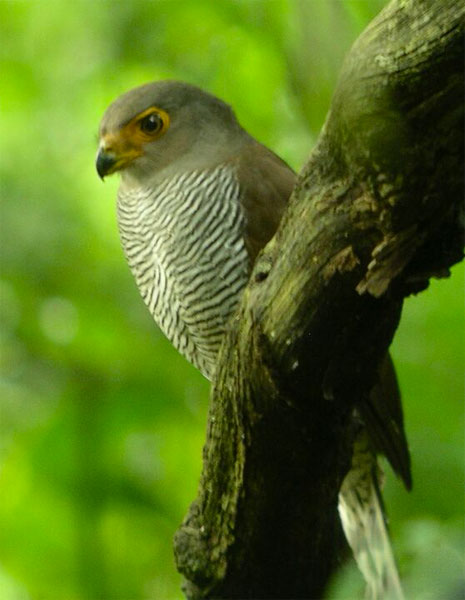
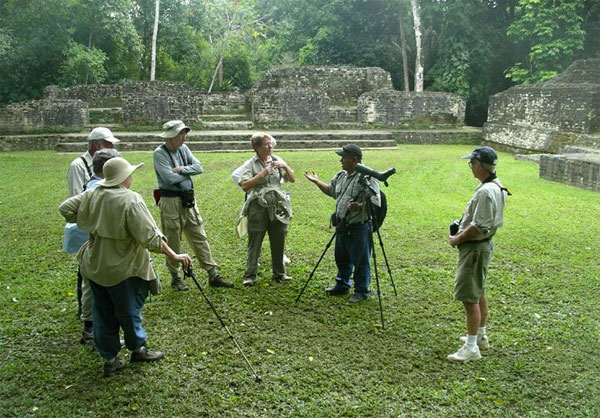
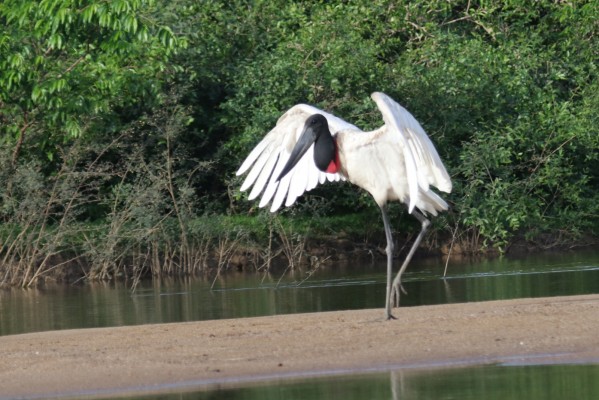
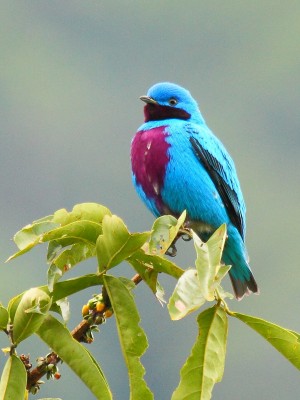
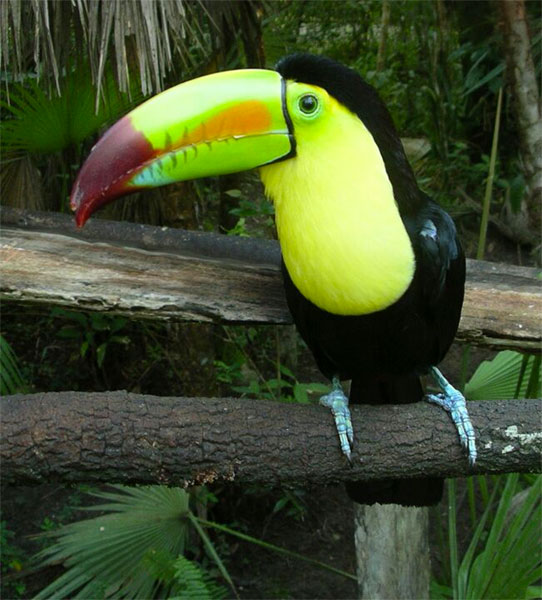
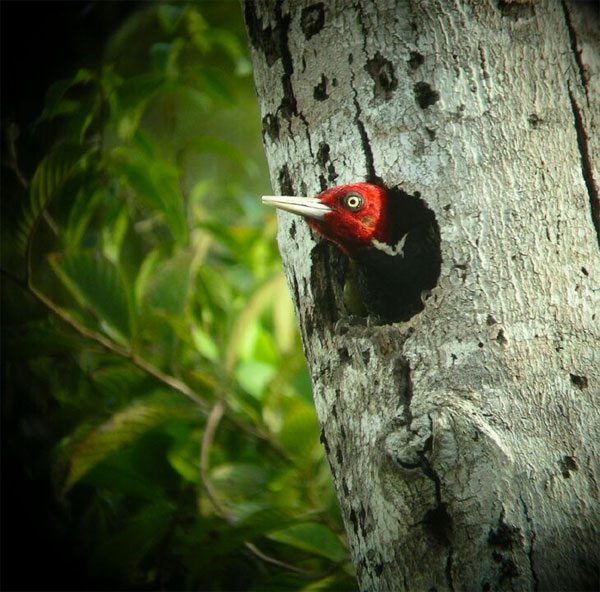
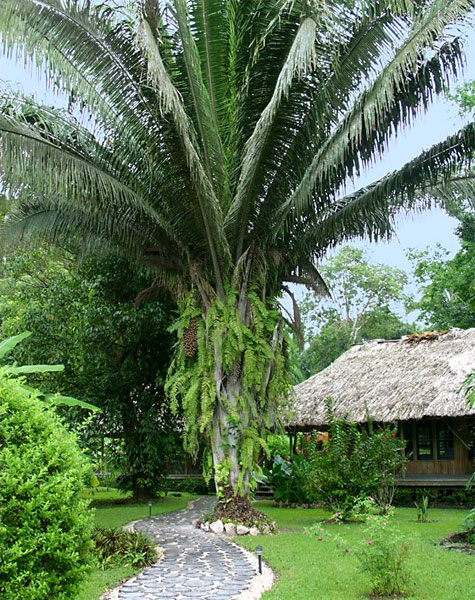
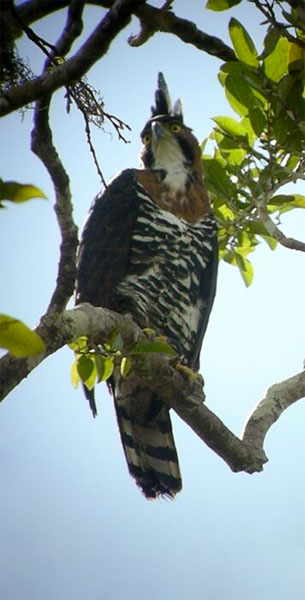

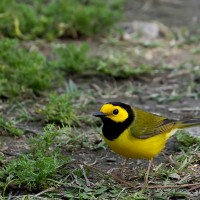 Cape May: Spring Migration FULL - See our fall departures!May 13 - 19, 2025
Cape May: Spring Migration FULL - See our fall departures!May 13 - 19, 2025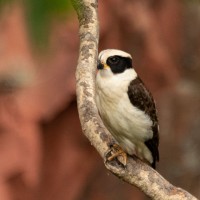 Oaxaca Valley: Birds, Culture & CraftsJuly 19 - 27, 2025
Oaxaca Valley: Birds, Culture & CraftsJuly 19 - 27, 2025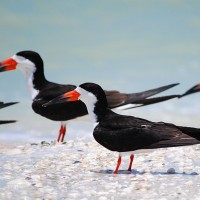 Cape May: Fall MigrationOctober 14 - 20, 2025
Cape May: Fall MigrationOctober 14 - 20, 2025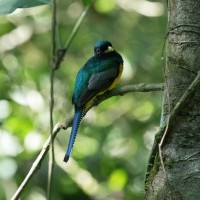 Belize: Three Great LodgesNovember 2 - 12, 2025
Belize: Three Great LodgesNovember 2 - 12, 2025 Trinidad & Tobago: Incredible Birds & WildlifeJanuary 4 - 13, 2026
Trinidad & Tobago: Incredible Birds & WildlifeJanuary 4 - 13, 2026 Belize: Three Great LodgesFebruary 18 - 28, 2026
Belize: Three Great LodgesFebruary 18 - 28, 2026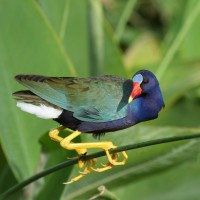 Texas Coast & Big ThicketApril 15 - 23, 2026
Texas Coast & Big ThicketApril 15 - 23, 2026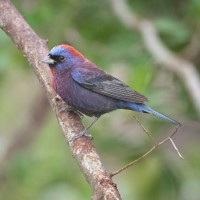 Texas Hill CountryApril 24 - 29, 2026
Texas Hill CountryApril 24 - 29, 2026 Cape May: Spring MigrationMay 12 - 18, 2026
Cape May: Spring MigrationMay 12 - 18, 2026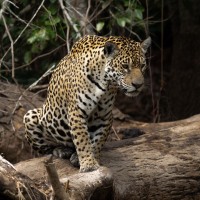 Brazil’s Pantanal: Jaguars! And More…August 15 - 25, 2026, w/Amazônia extension
Brazil’s Pantanal: Jaguars! And More…August 15 - 25, 2026, w/Amazônia extension





